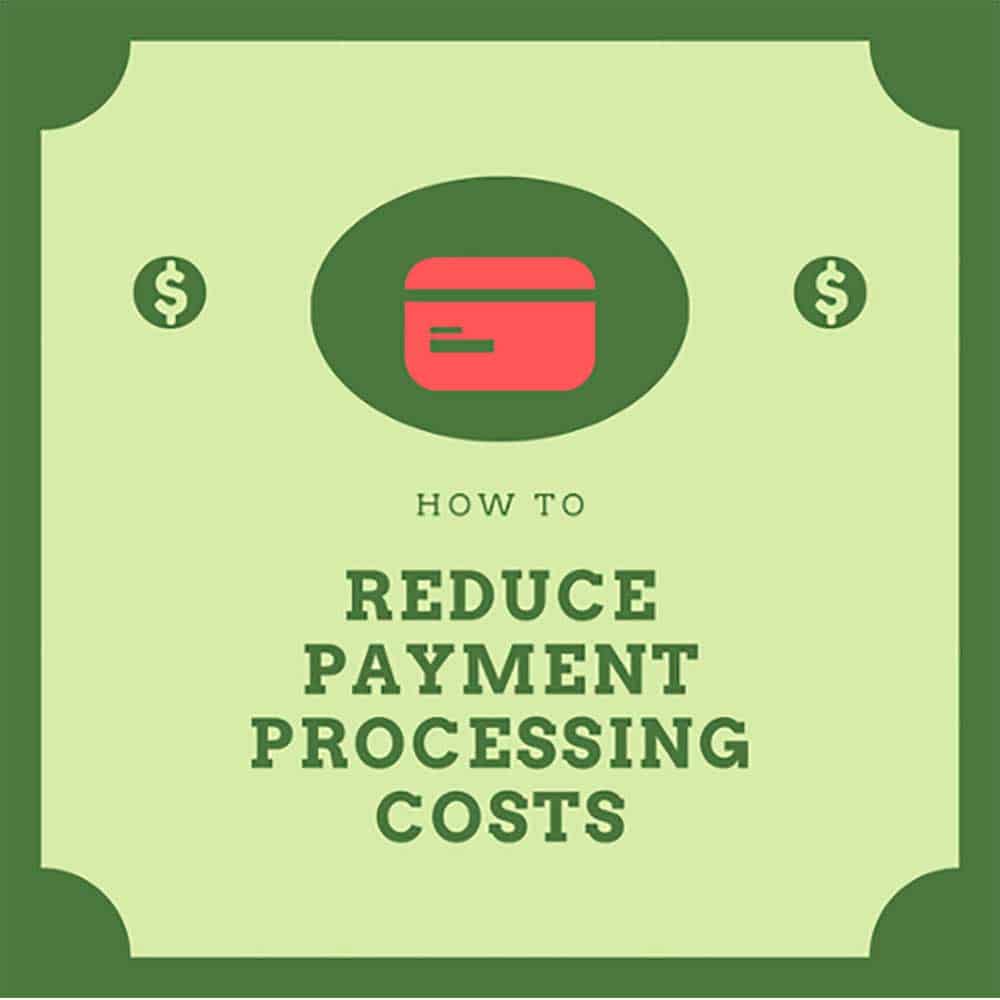
How To Reduce Payment Processing Costs
If you’ve ever accepted a credit card payment from a customer, you’ve probably winced at the transaction cost. What does VISA (or AmEx, or MasterCard) do to deserve 3% of your hard earned money? For some of us, 3% might eat into nearly all our profit margin, making it crucial to find ways to save on credit card fees.!
Fortunately, there are a variety of ways to reduce payment processing costs. These strategies generally fall into one of three categories:
- Renegotiate your contract
- Switch processors
- Become more operationally efficient
But before we get to that, it helps to understand the three basic types of payment processing models used for merchant account services:

Part I: The Three Types of Transaction Processing
These fee structures are widely used by e-commerce and retail storefronts, and even merchants requiring a high risk merchant account. There are three types of payment processing models in the marketplace, each with their own type of pricing. They are:
- Flat Rate Pricing
- Tiered-Rate Pricing
- Interchange Plus Pricing
All three models have different pricing structures. As a business owner, it’s important to understand the differences and to know how to get the best deal for your company.
1. Flat Rate Pricing
This is exactly what it sounds like. You pay the same flat rate for all transactions, regardless of what they are or what type of payment method is used. This is awesome in terms of simplicity because your billing statement will be straightforward and easy to understand.
This type of pricing is great for businesses that do a small number of transactions per month. It’s also helpful for new business owners because it makes forecasting much easier. If you know the approximate number of transactions you will conduct each month, you can easily figure out what your processing expenses will be.
2. Tiered Pricing
This type of pricing modelis a little more complex and is based on a “bundling” model. Typical bundle types include Qualified, Mid-Qualified and Non-Qualified. These are terms that are used to describe the type of card transactions that you’re running.
This bundling technique is based on the type of card being used, how quickly the transactions are reconciled and other such factors. This makes it extremely difficult to anticipate what your monthly billing costs will be. Since you never know what types of cards your customers will use, you can’t really forecast with much accuracy.
3. Interchange Plus Pricing
This is the most cost-efficient type of pricing. With interchange plus pricing, you will pay the interchange fee directly to the credit card companies. In the other two models, the processor pays it on your behalf, which makes the pricing a bit convoluted.
This model allows you to pay the fees directly to the credit card companies, and the processor simply adds their fee on top of that. This makes the billing and reconciliation of charges much more transparent, not to mention easier to understand. Interchange plus is the preferred credit card processing method for all types of businesses, from online startups to Fortune 500 chains.
Part II: Tips for Reducing Payment Processing Costs
Now that you have a basic understanding of the different pricing models for payment processing, let’s take a look at how to decrease your costs. There are a variety of ways to do this, and every merchant’s situation will be unique.
Change Pricing Models
The most obvious way to decrease your processing costs is to change the pricing model that you’re currently using. This could be as simple as choosing a different plan with your current processor. If your processor offers a variety of pricing models, have a conversation with them to find what’s best for you.
Renegotiate Your Contract
If your current processor does not offer any other pricing models, try to renegotiate your contract with them. If your transactions have increased over time, that’s an indicator that your business is growing. You can make a case for lower fees because your increased volume will make up the difference for them in terms of revenue.
Change Processors
This is a little more complicated than just switching pricing models or contracts, but it’s definitely worth looking in to. If your current processor does not offer any other models and refuses to negotiate, it’s worth investigating other options. If you do find something that’s better, make the switch and don’t look back.
Become More Operationally Efficient
There are tons of ways to be more efficient with your operation that will result in a higher level of productivity and lower processing costs. Here are some of the most effective and easiest to implement.
Streamline Your Transaction Types
Processors charge different fees for different types of transactions. Here are some examples of this:
- Debit cards generally have lower fees than credit cards.
- If you swipe a card, you will pay lower fees than if you enter in manually.
- Cards with an EMV chip will cost less than those being swiped.
Although you can’t necessarily change the payment types your customers use, you can sway them in a particular direction. Gently letting them know that you prefer one type of payment method over another can actually influence their behavior over time. If you need a more blatant way to do this, offer an incentive for using a particular payment type. If you are making a significant change to your policies, be sure to use the best live chat for websites to help them attend to all customer queries and concerns and put them at ease to ensure excellent customer retention.
Invest in Appropriate Equipment
Since EMV (“chip”) transactions tend to have the lowest fees, it makes sense to have a card reader that can accept them. If you haven’t invested in a chip reader, you should consider doing so. This will almost automatically decrease the amount of fees you’re paying.
Reconcile Transactions at the End of Each Day
This is one of those tasks that is really tempting to put off until tomorrow. However, many processors will charge higher fees if you don’t get it done within 24 hours. You might have every intention of settling the payments first thing the next morning, but we all know that life gets in the way. You might as well do it before you leave the office for the day.
Conclusion
If you find that you’re paying too much in processing fees, don’t feel like there’s no way out! If renegotiating your contract or switching processors is too intimidating, start with your operations. Use these tips to be as efficient as possible from an operations standpoint.
If you do that for 6-12 months and you don’t see significant improvement in your fees, maybe it’s time to consider the next steps. If you need help renegotiating, consider hiring an attorney to help. When all else fails, secure a couple of free consultations with different processors to see what’s out there.
Guest Blogger Cris Carillo helps companies establish — and improve! — their merchant services at AlliedPay.com. Contact him at ([email protected]



